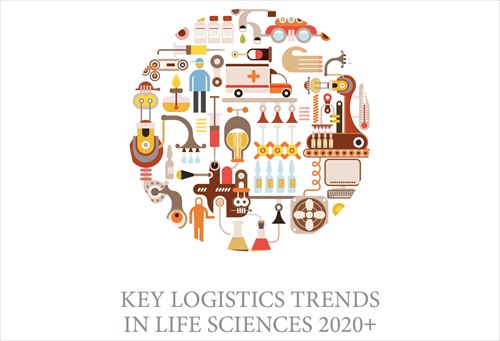Members Login

Channels
Special Offers & Promotions
DHL study predicts direct distribution channels to the end consumer for the pharmaceutical and medical device manufacturers
DHL research identifies five crucial implications and action opportunities for supply chain management in 2020 and beyond. Comprehensive report highlights trends for pharmaceutical and medical device manufacturers.
DHL, the world’s leading logistics provider, has released an outlook on key logistics trends in the Life Sciences sector for 2020 and beyond. Compiled in a white paper by DHL Customer Solutions & Innovation based on current developments and megatrends, the report derives five key logistics implications and action needs for the industry: direct distribution to end consumers; increasing differentiation of supply chains; deepening access of emerging markets to tier-2 and tier-3 cities; rising importance of supply chain visibility to enable demand driven supply chains and process outsourcing; and finally the need for companies to keep their supply chain flexible to adapt to requirements of innovative products.
“The Life Sciences and Healthcare industry remains a key sector for DHL. We will continuously work together with our customers and partners to address the changing shape of the industry early on”, said Roger Crook, CEO DHL Global Forwarding, Freight and Executive Board Sponsor for the Life Sciences & Healthcare sector.
One of the five key action opportunities for manufacturers is to build up their own e-commerce operation, either by developing their own fulfillment capabilities or by distributing their products via a third-party platform. The study also points to an increase in the differentiation of supply chains. Mode of transportation, warehousing consolidation and depth of distribution will need to be tailored in each country to the Life Sciences product category, differentiating high-value/specialty drugs and implants, innovative standard drugs and devices, generic drugs and frugal/low-tech devices OTCs, nutraceuticals and consumer medical devices.
Furthermore, the white paper suggests pharmaceutical and medical device manufacturers to expand their distribution capabilities to tier-2 and tier-3 cities and sometimes even to rural areas in emerging countries. This will require companies to decide whether to build-up their own logistics infrastructures and how broad they want their presence in countries to be.
In the future, comprehensive visibility within the supply chain will become increasingly important for product security and integrity. At the same time, better visibility in the supply chain will enable lean, demand-driven supply chains and is essential to control and outsource logistics processes. Finally, manufacturers will need to stay flexible to adapt their supply chains quickly to new regulatory standards and the distribution requirements of innovative products such as product bundles for home care of rare diseases or 3D printed personalized implants.
“With this white paper, we have laid out the key trends of tomorrow’s Life Sciences logistics. Being the logistics industry leader for the Life Sciences and Healthcare sector, we hope to create a solid starting point for logistics decision makers to think about future business requirements and differentiation opportunities through logistics; thus, enabling a constructive debate within our network of customers and partners”, said Angelos Orfanos, President Life Sciences and Healthcare, DHL Customer Solutions & Innovation.
The report points out that thanks to the internet, people are better informed on health-related issues and treatment options than ever before. Moreover, new products for private health monitoring are available while the limits for reimbursement of health care services narrow in many mature markets. These developments support the shift towards self-medication, which boosts the global market of over-the-counter products by 8.3 percent annually until 2016 and drives the establishment of direct distribution channels to end consumers. At the same time, new health markets, such as China, India, Brazil, Russia or Mexico broaden the base for direct-to-consumer medication and medical devices as well as ‘classical’ prescription products dispensed via pharmacies and hospitals. In China, spending for medicines is expected to increase by 166 percent from 67 billion USD in 2011 to 161 billion USD in 2016.
DHL and its research partner Z_punkt The Foresight Company followed a three stage approach when conducting the research. Initially, the most important megatrends were analyzed. Secondly, key challenges based on current changes and developments in society, technology, politics and economy were evaluated. Finally, the research team drew conclusions on the respective logistics implications and pointed out areas where action is needed.
Media Partners



